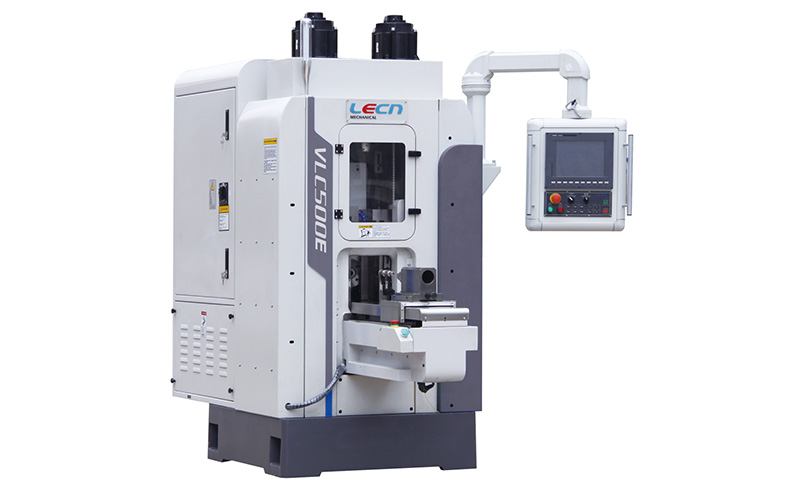Exploring the Diverse Types of Plate Rolling Machines
In the ever-evolving realm of industrial machinery, Plate Rolling Machines stand as indispensable assets, revolutionizing the fabrication process. These powerful tools offer immense versatility and efficiency in bending various types of metal plates. In this comprehensive guide, we delve into the intricacies of Rolling Machines, exploring their types, applications, and the unparalleled advantages they bring to the manufacturing landscape.

Introduction to Plate Rolling Technology
Plate Rolling Machines also known as Plate Bending Machines, are at the forefront of metal fabrication. They operate on the principle of three-point bending, allowing them to shape metal plates into a curvature as desired. This technology is a game-changer in industries ranging from aerospace to construction, enabling the creation of cylindrical and conical shapes with precision.
The Three Main Types
Three-Roll Plate Rollers
The Three-Roll Plate Roller is a workhorse in metal fabrication. Comprising three rollers, it performs bending operations by adjusting the position of the top roll. This type excels in handling a broad spectrum of materials and is renowned for its efficiency in producing cylindrical shapes.
Four-Roll Plate Rollers
Four-Roll Plate Rollers introduce an additional pre-bending capability. With the ability to control both lateral and vertical movements of the side rolls, they offer enhanced precision and flexibility. This makes them ideal for projects demanding high accuracy and complex shapes.
Double Pinch Plate Rollers
Double Pinch Plate Rollers come equipped with two adjustable rolls, allowing for material to be pinched at both ends. This design significantly reduces the flat ends of a metal plate, providing a superior finish. It excels in applications where precision and aesthetics are paramount.
Applications Across Industries
Aerospace Industry
Plate Rolling Machine manufacturer play a pivotal role in the aerospace industry, shaping metal sheets for aircraft components. The ability to produce curved and tapered sections ensures the creation of aerodynamic structures, contributing to the efficiency and performance of aircraft.
Shipbuilding
In shipbuilding, these machines are indispensable for crafting the curved sections of hulls and other structural elements. The efficiency and precision offered by Plate Rolling Machines contribute to the durability and seaworthiness of the vessels produced.
Oil and Gas Sector
Plate Rolling Machines find extensive use in the oil and gas sector for fabricating pipes and cylindrical components. Their versatility allows manufacturers to meet the stringent standards of this industry, ensuring the integrity of structures used in exploration and extraction.
Advantages of Plate Rolling Machines
Precision and Consistency
One of the standout features of horizontal rolling machine is their ability to provide unparalleled precision and consistency in bending operations. This ensures that the fabricated components meet exact specifications, reducing the need for extensive rework.
Versatility in Material Handling
Whether dealing with stainless steel, aluminum, or high-strength alloys, Plate Rolling Machines showcase remarkable versatility. They can efficiently handle a wide range of materials, making them a go-to choice for diverse industrial applications.
Increased Production Efficiency
The efficiency of Plate Rolling Machines is a key factor driving their widespread adoption. The rapid bending capabilities, coupled with the ability to handle large volumes of material, contribute to significant gains in production efficiency.
Choosing the Right Plate Rolling Machine
Considerations for Selection
Material Compatibility
Different Plate Rolling Machines may excel in handling specific materials. Consider the type of metal you frequently work with to ensure optimal performance and longevity of the machine.
Bending Capacity
Evaluate the maximum bending capacity required for your projects. Choosing a machine with the right capacity ensures that you can handle a diverse range of applications with ease.
Precision Requirements
If your projects demand high precision, opting for a machine with advanced control features and digital displays becomes crucial. This guarantees accurate and repeatable results.
In Conclusion
Plate Rolling Machines stand as pillars of innovation in the realm of metal fabrication, offering a spectrum of capabilities that cater to diverse industries. From aerospace to shipbuilding, their impact is undeniable, contributing to the creation of structures that define modern infrastructure. Understanding the nuances of each type empowers manufacturers to make informed choices, ensuring seamless integration into their production processes.
484
0
0
All Comments (0)
Previous: How to Maintain Pipe making machine
Next: What Factors Should Consider When Choosing the Lithium Battery Laser Welding Machine?
If you are interested in sending in a Guest Blogger Submission,welcome to write for us!


Comments